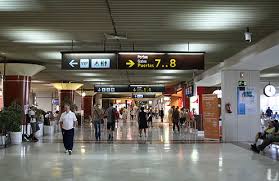 From the middle of the 18th century, the Fallas were just one part of the events held to celebrate St Joseph’s Day (March 19). Throughout the morning of March 18, rag dolls called peleles were strung across city streets from window to window, or small platforms were arranged up against walls showing one or two figures (ninots) that referred to an event or to certain individuals who were particularly deserving of public derision. Throughout the day, children and young people collected items to be burnt on bonfires known as fallas
From the middle of the 18th century, the Fallas were just one part of the events held to celebrate St Joseph’s Day (March 19). Throughout the morning of March 18, rag dolls called peleles were strung across city streets from window to window, or small platforms were arranged up against walls showing one or two figures (ninots) that referred to an event or to certain individuals who were particularly deserving of public derision. Throughout the day, children and young people collected items to be burnt on bonfires known as fallas
Later on the mayor of Valencia forbid the positioning of fallas in narrow streets near to buildings etc and this led the inhabitants to construct their fallas only in wide streets, at crossroads and in squares.
As they were now not placed against a wall, the design transformed to allow it to be achievable to look at them from all sides. This produced much greater freedom of construction and invited the inclusion of messages in verse all close to them.
Each falla represents a social action or attitude deserving of criticism or ridicule and this is reflected in the verses displayed. From the middle of the 19th century, these verses began to be printed and bound, giving rise to the booklet known as the llibret
 Fallas are celebrated in various other towns in Valencia and Alicante provinces. Even though the times of firecracker presentations and flower offerings can be different from those in Valencia city, all towns will set up the monuments three days before the main night of the burning, March 19. The burning generally begins with the children’s monuments around 21.00 hrs and the main monuments are burned in reverse order to their prize position. The top prize winner is burned around 01.00 hrs. Main Fallas towns include Gandia, Oliva, Dénia and Benidorm.
Fallas are celebrated in various other towns in Valencia and Alicante provinces. Even though the times of firecracker presentations and flower offerings can be different from those in Valencia city, all towns will set up the monuments three days before the main night of the burning, March 19. The burning generally begins with the children’s monuments around 21.00 hrs and the main monuments are burned in reverse order to their prize position. The top prize winner is burned around 01.00 hrs. Main Fallas towns include Gandia, Oliva, Dénia and Benidorm.
Last Saturdy evening saw the completion of the four-day Fallas festival, the largest and most famous in the Comunidad Valenciana, when countless numbers of papier-mâché monuments went up in smoke and flames.
Even Though the principal activity during the Fallas usually takes place in the city of Valencia, a number of other towns and villages in its province – and in the north of the province of Alicante – also come to a dead halt from March 16 to 19 as their residents party hard night and day.
number of other towns and villages in its province – and in the north of the province of Alicante – also come to a dead halt from March 16 to 19 as their residents party hard night and day.
Some of the main features of the fiestas include the prize giving – where the very best monuments are selected – and the ofrena, or offering of flowers to the Virgin Mary.
On the last night, the monuments – which are normally caricatures of current affairs or famous individuals – are set fire to, beginning with the one which comes last and finishing with the winner.
Come Sunday morning, nevertheless, all traces of these enormous bonfires will have been cleared away, whilst falleras and band-members sleep off the effects of four days of eating, drinking, dancing, parading and otherwise celebrating.





